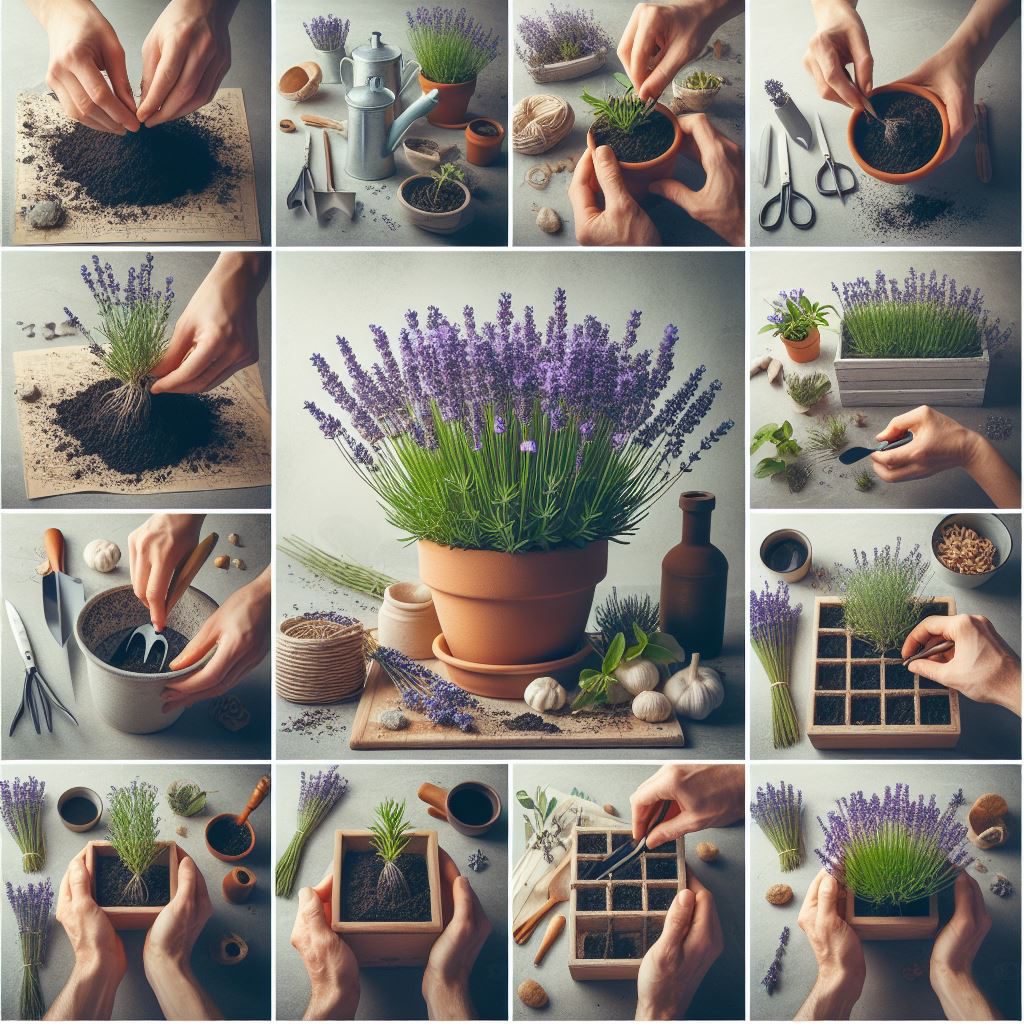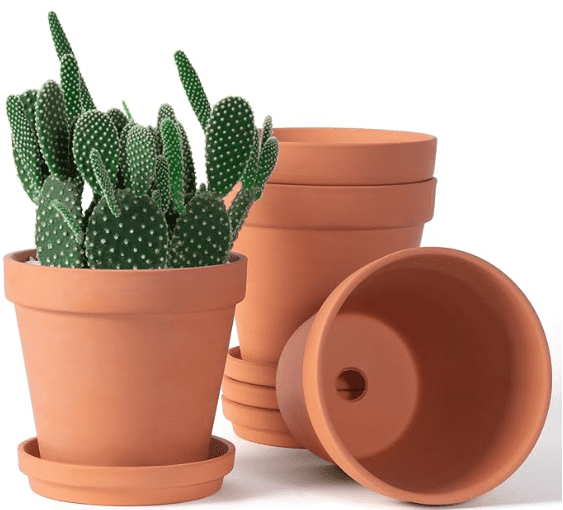
How to Grow Lavender in Pots: Transform your balcony or patio into a fragrant oasis with our guide to growing lavender in pots! This versatile Mediterranean herb thrives in containers, bringing its calming scent and vibrant blooms to any space. Learn the secrets to choosing the right pot, soil mix, sunlight for your lavender, and essential watering, feeding, and pruning tips. Discover the best compact varieties for container gardening and troubleshoot common issues to keep your lavender flourishing all season. Let’s get started!
Understanding Lavender’s Needs
To thrive, lavender yearns for conditions reminiscent of its Mediterranean origins: abundant sunlight, well-draining soil, and minimal water once established. Mimicking these elements in a pot requires careful selection of container, soil mix, and placement.
Choosing the Right Pot
The pot selection plays a crucial role in lavender’s success. Opt for breathable materials like terracotta or ceramic, which help prevent root rot by promoting airflow and moisture control. Ensure the pot boasts ample drainage holes and sufficient size to accommodate the plant’s growth.

Soil Selection and Preparation
Lavender flourishes in well-draining soil with a neutral to slightly alkaline pH. A blend of potting soil, coarse sand, and perlite creates the perfect drainage mix, providing an ideal growing environment. If needed, adjust the pH level by adding lime.
How to Grow Lavender in Pots
Step-by-Step Guide
The secret to a thriving lavender plant lies in the initial planting steps. Follow this comprehensive guide:
- Choose the Right Pot: Lavender thrives in well-drained conditions, necessitating pots with ample drainage holes. Opt for materials like terracotta or ceramic that facilitate soil drying.
- Selecting Soil: A mix of potting soil, coarse sand, and perlite ensures the perfect drainage and aeration of lavender demands.
- Pot Preparation: Begin with a layer of gravel at the pot’s base to enhance drainage, followed by the soil mix.
- Planting: Gently remove the lavender from its nursery container, tease out the roots slightly, and plant it at the same depth it was in its original pot.
- Location: Lavender yearns for sunlight – a spot that receives at least 6 to 8 hours of direct light is ideal.
By adhering to these steps, you lay a strong foundation for your lavender to flourish.
Watering Techniques
Overwatering is a common pitfall in lavender care. Unlike many plants, potted lavender thrives with a “deep water and then allow to dry” approach. Regularly monitoring the soil’s moisture level is key to avoiding overwatering and its detrimental effects.
Maximizing Sun Exposure
Lavender’s love for sunlight cannot be overstated. Aim for at least 6 to 8 hours of direct sunlight daily to provide the energy it needs for optimal growth and vibrant blooms. For gardeners in regions with limited sun, a movable pot allows the plant to follow the sun’s path throughout the day.
Fertilizing
While not a heavy feeder, lavender benefits from a light application of slow-release fertilizer at the beginning of the growing season. Opt for organic options like compost tea to nourish the plant without overwhelming it.
Pruning and Maintenance
Regular pruning not only maintains the lavender’s shape and size but also encourages robust growth. The ideal time for pruning is after the blooming period, when cutting back a third of the growth stimulates the development of new shoots.
Winter Care for Potted Lavender
In cooler climates, potted lavender requires protection from the harsh winter elements. Moving pots indoors or to a sheltered area minimizes the risk of frost damage, ensuring the plant’s survival through the cold months.
Pest and Disease Management
The good news is that lavender is resistant to pests and diseases, especially when its basic care needs are met. However, remaining vigilant helps identify and address common issues like fungal infections and aphids before they cause harm.
Harvesting and Using Lavender
From culinary delights to crafting projects and aromatherapy, lavender offers a multitude of benefits. Harvest in the morning when the oils are most concentrated to capture its most potent fragrance and therapeutic properties.
Troubleshooting Common Issues
Addressing problems like yellowing leaves or stunted growth early can prevent serious damage and save the plant. Often, these issues stem from overwatering or insufficient light. By promptly identifying and rectifying the cause, you can ensure your lavender thrives.
Best Lavender for Growing in Pots
Given the vast array of lavender varieties, understanding their unique characteristics is crucial for making an informed choice. The primary distinction lies between Lavandula angustifolia, known for its sweet fragrance and culinary use, and Lavandula x intermedia (Lavandin), prized for its robust growth and high oil content.
For pot cultivation, consider compact and dwarf varieties that flourish in limited spaces:
- Hidcote Lavender: Celebrated for its deep purple flowers and compact size, making it ideal for small containers.
- Munstead Lavender: Boasting a slightly larger frame and more resilient nature, perfect for slightly bigger pots.
- Little Lottie Lavender: This charmer features white and pink blooms on a compact frame, adding a delightful touch to indoor spaces.


























